Located on the corner of High Street and Guildhall Street, this building had been empty for some time, but remained one of Dunfermline’s best known landmarks. The foundation stone for the imposing classical-style building was laid in 1807; it was originally designed as a guildhall and linen exchange. The name of Dunfermline was once synonymous with fine-quality table linen, providing employment for most of the town’s population.
Prints, illustrations and text about The Guildhall and Linen Exchange.
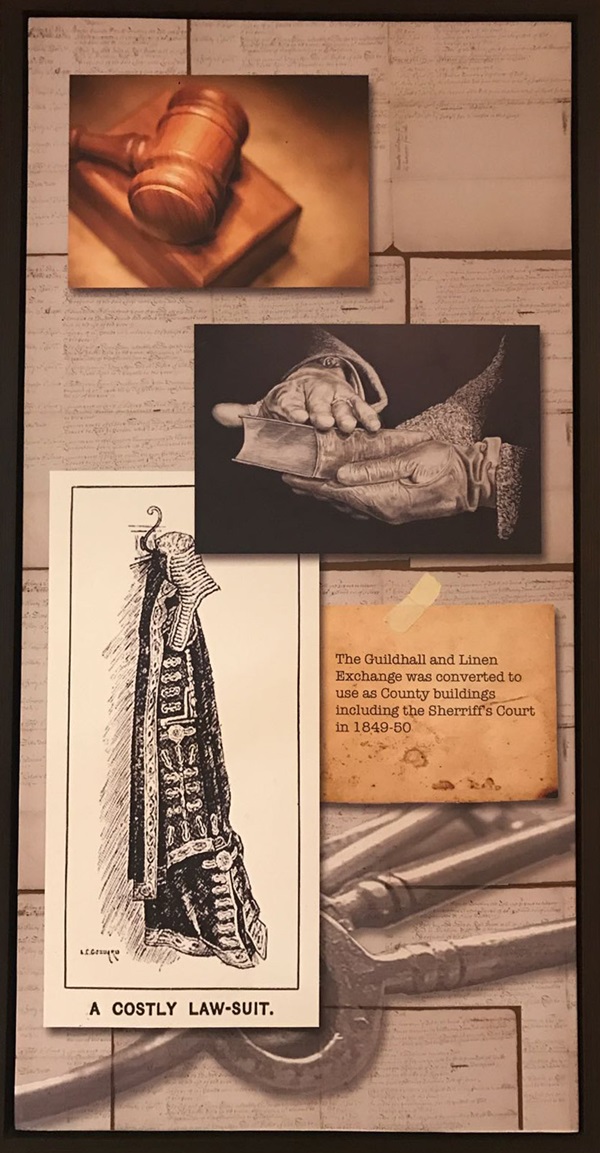
The text reads: The Guildhall and Linen Exchange was converted to use as County buildings including the Sherriff’s Court in 1849-50.
An illustration and text about The Guildhall and Linen Exchange.
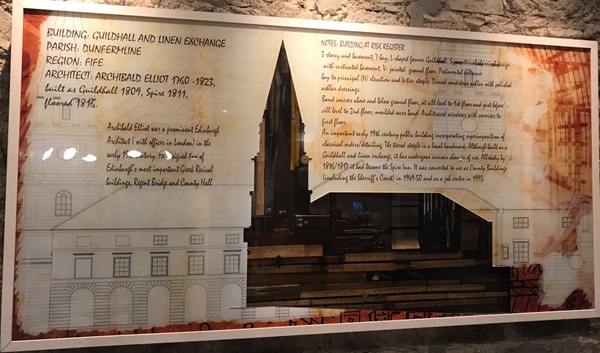
The text reads:
Building: Guildhall and Linen Exchange
Parish: Dunfermline
Region: Fife
Architect: Archibald Elliot 1760-1823, built as Guildhall 1809, spire 1811, floored 1816.
Archibald Elliot was a prominent Edinburgh architect (with offices in London) in the early 19th century. He designed two of Edinburgh’s most important Greek revival buildings, Regent Bridge and County Hall.
Notes: Building at Risk Register.
3 storey and basement: 7 Bay; L-shaped former Guildhall. Symmetrical classical design with rusticated basement, V-jointed ground floors. Pedimental entrance bay to principal (N) elevation and 4 ties steeple. Droved sandstone ashlar with polished ashlar dressings.
Band courses above and below ground floors, at cill level to 1st floors and just before cill level to 2nd floor; moulded eaves band. Architraved windows with cornices to first floor.
An important early 19th century public building incorporating superimposition of classical orders/detailing. The tiered steeple is a local landmark. Although built as a Guildhall and linen exchange, it has undergone various changes of use. Already by 1816/1817 it had become the Spire Inn. It was converted to use as County buildings (including the Sherriff’s Court) in 1949-50 and as a job centre in 1993.
Photographs and text about linen weaving.
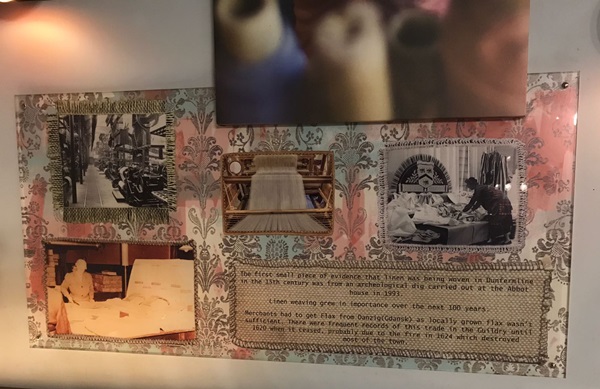
The text reads: The first small piece of evidence that linen was being woven in Dunfermline in the 15th century was from an archaeological dig carried out at the Abbot house in 1993.
Linen weaving grew in importance over the next 100 years.
Merchants had to get flax from Danzig (Gdansk) as locally grown flax wasn’t sufficient. There were frequent records of this trade in the Guildry until 1620 when it ceased, probably due to the fire in 1624 which destroyed most of the town.
Two grand ceiling panels.
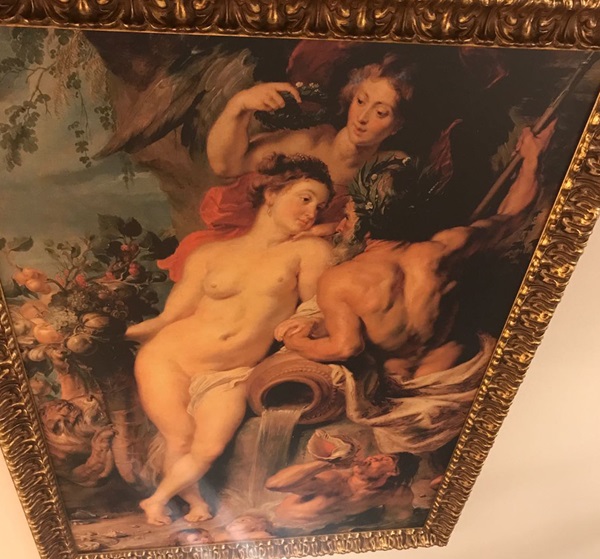
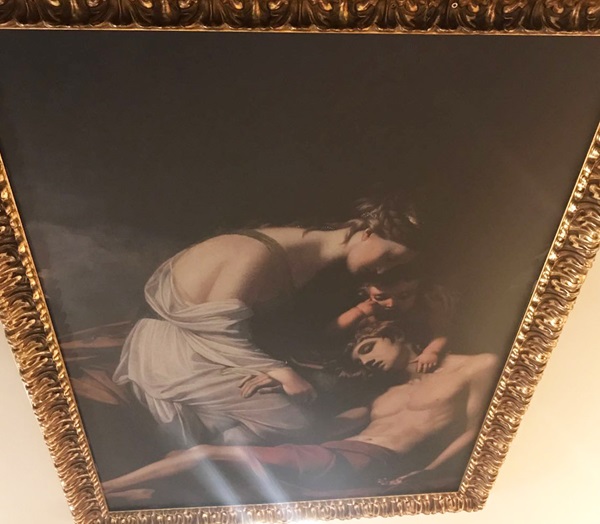
Two of the ceiling panels are held in the vast collection of diverse artworks in the Carnegie Museum of Art.
Venus Lamenting the Death of Adonis, by Benjamin West 1768 and The Toilet of Venus by Simon Vouet 1640.
A photograph and text about the Linen Exchange.
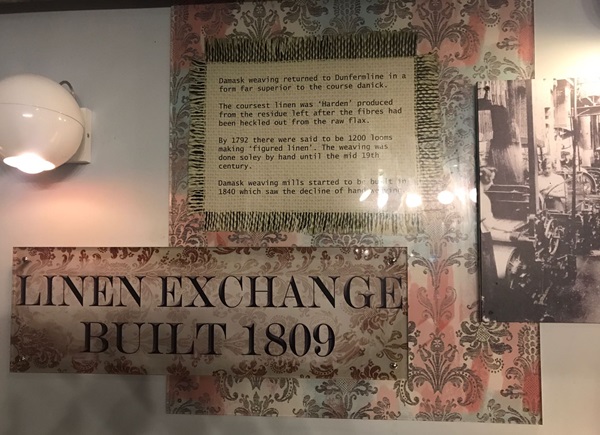
The text reads: Damask weaving returned to Dunfermline in a form far superior to the course danick.
The coarsest linen was Harden, produced from the residue left after the fibres had been heckled out from the raw flax.
By 1792 there were said to be 1200 looms making figured linen. The weaving was done solely by hand until the mid-19th century.
Damask weaving mills started to be built in 1840 which saw the decline of hand weaving.
A statue made with the combination of the Carnegie Art Collection and the textile industry which was so important to the history of Dunfermline.
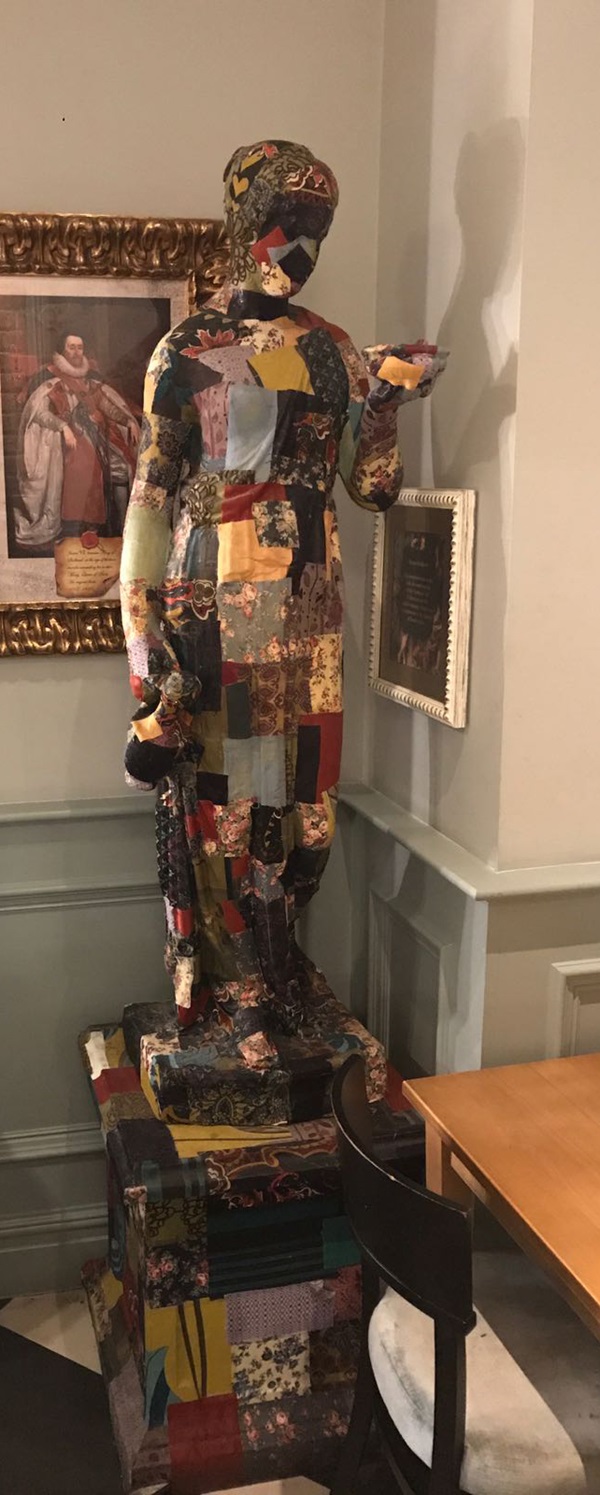
External photograph of the building – main entrance.
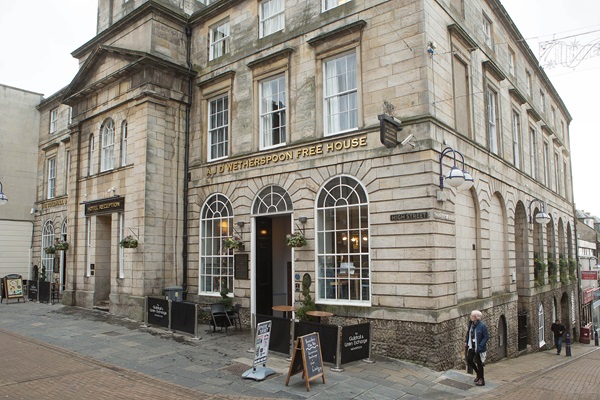
If you have information on the history of this pub, then we’d like you to share it with us. Please e-mail all information to: pubhistories@jdwetherspoon.co.uk